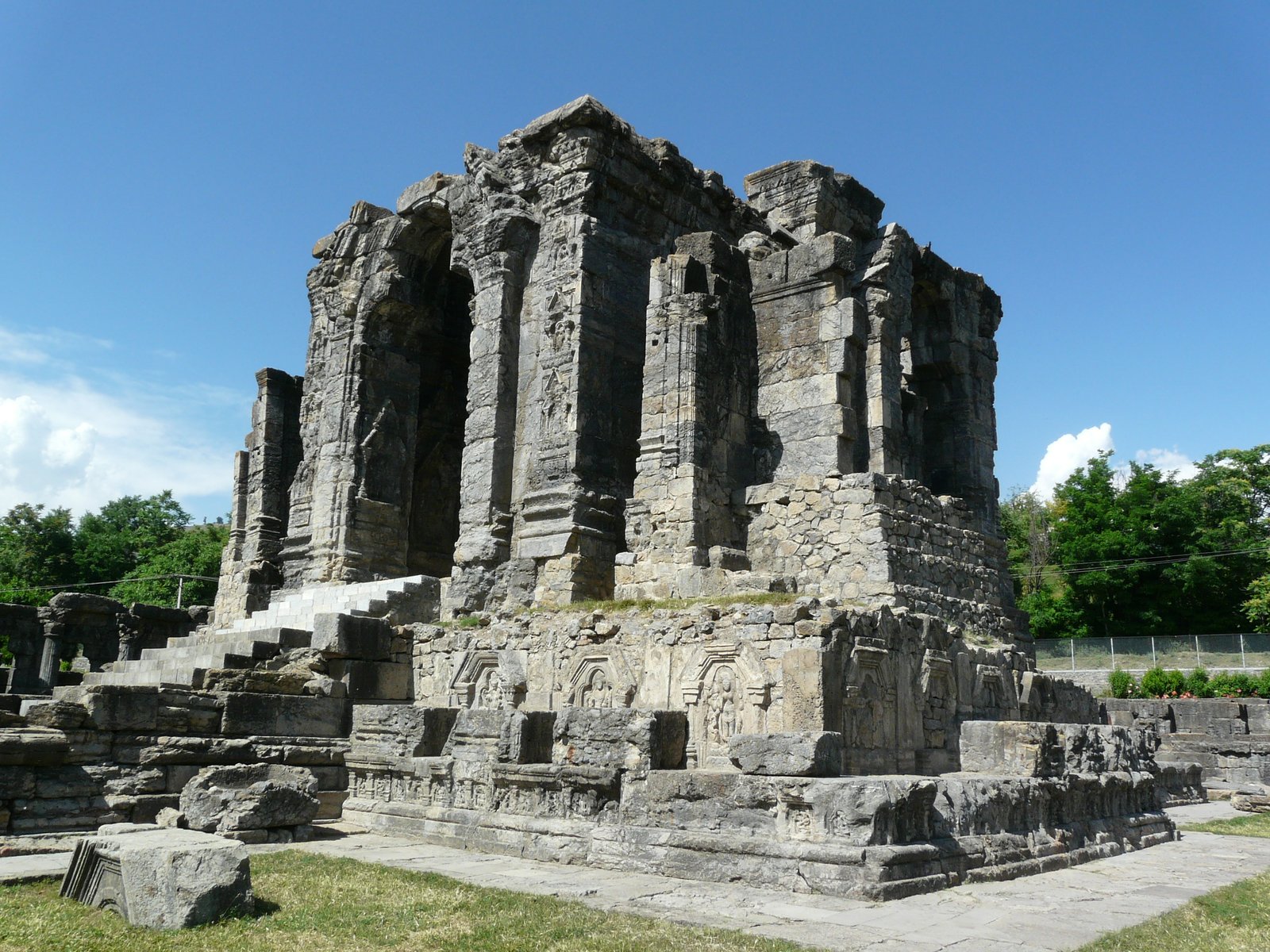Martand Sun Temple

Built in the 8th century CE by King Lalitaditya Muktapida of the Karkota dynasty, it is one of the most significant examples of early Kashmiri temple architecture.Although now in ruins, the grandeur of its design, carvings and layout make it a major heritage monument.

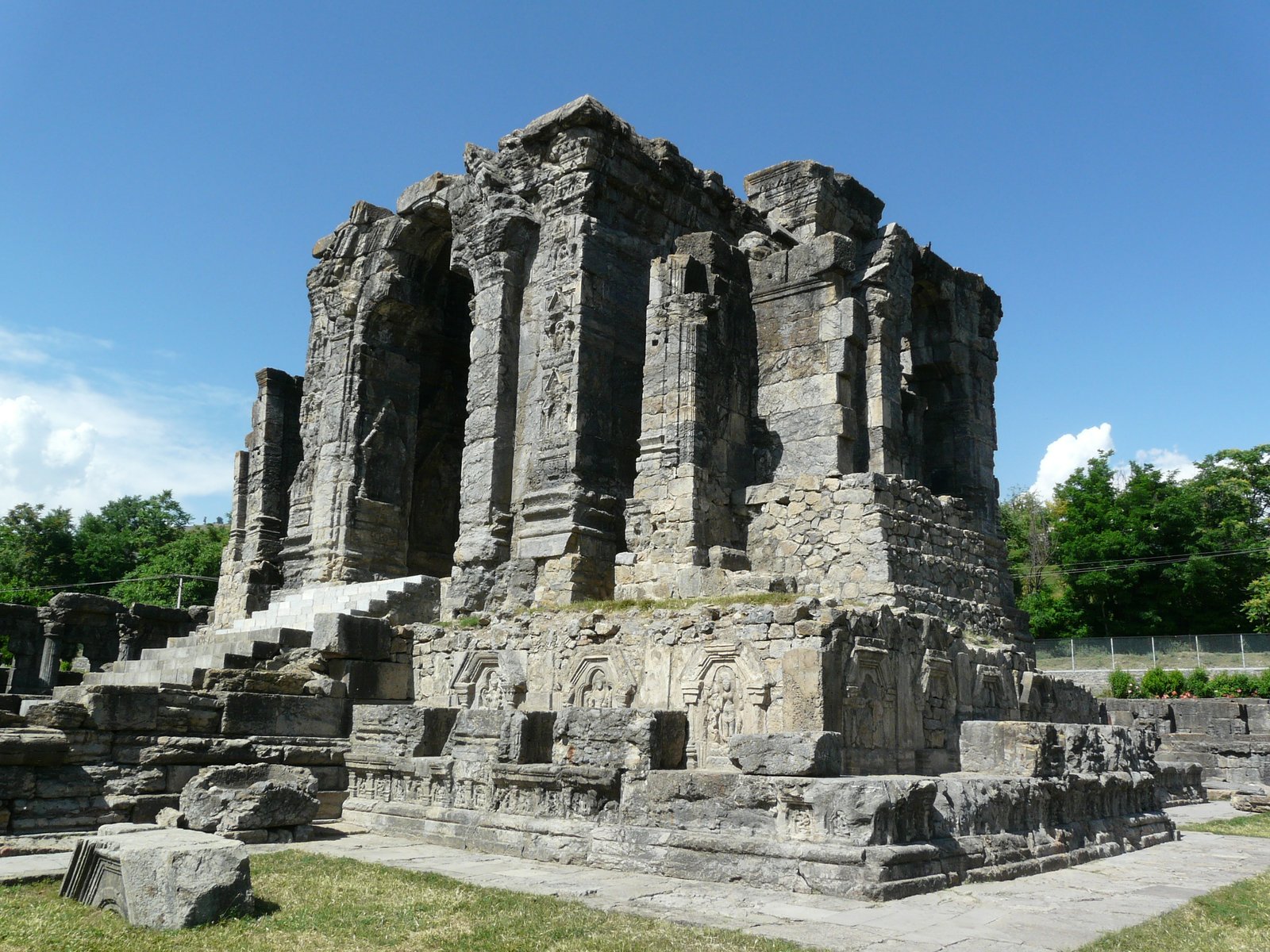

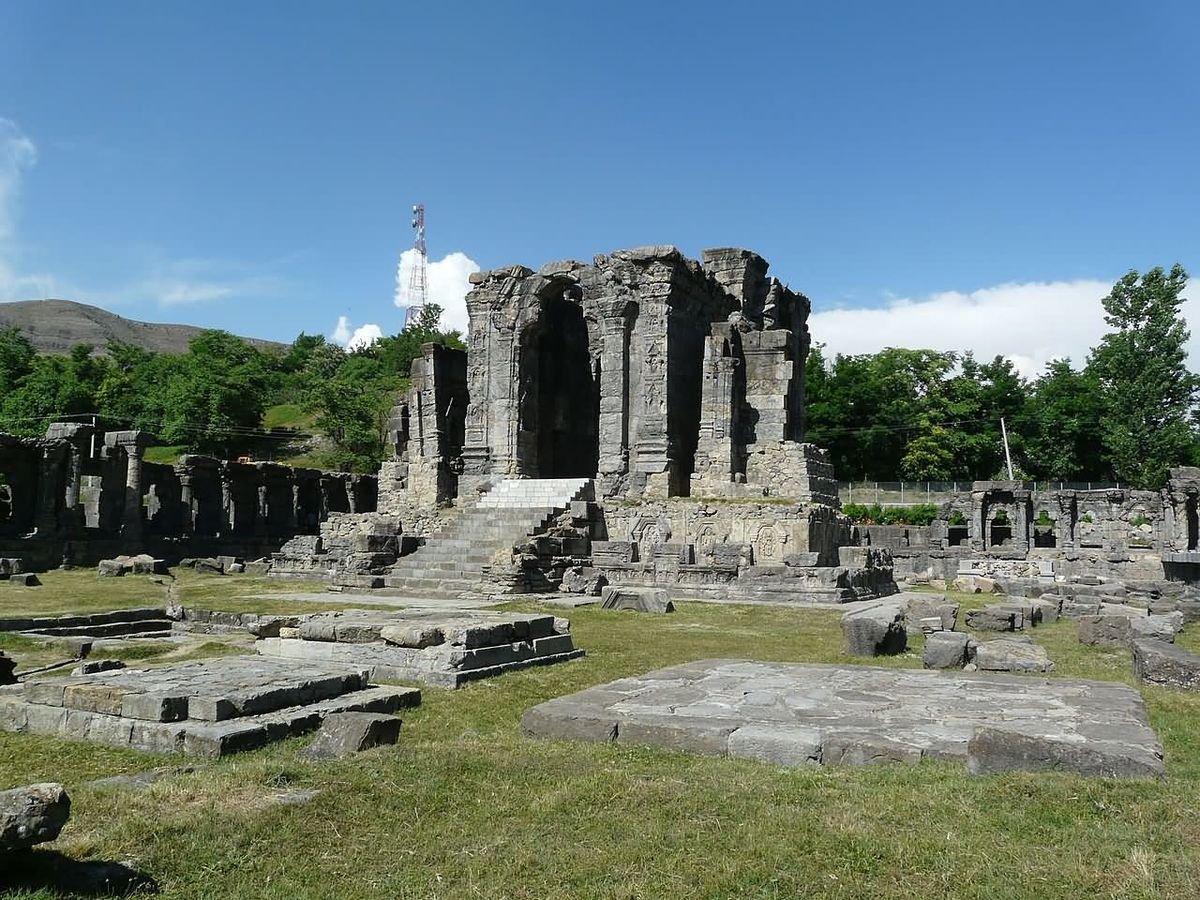


Architecture of the Temple
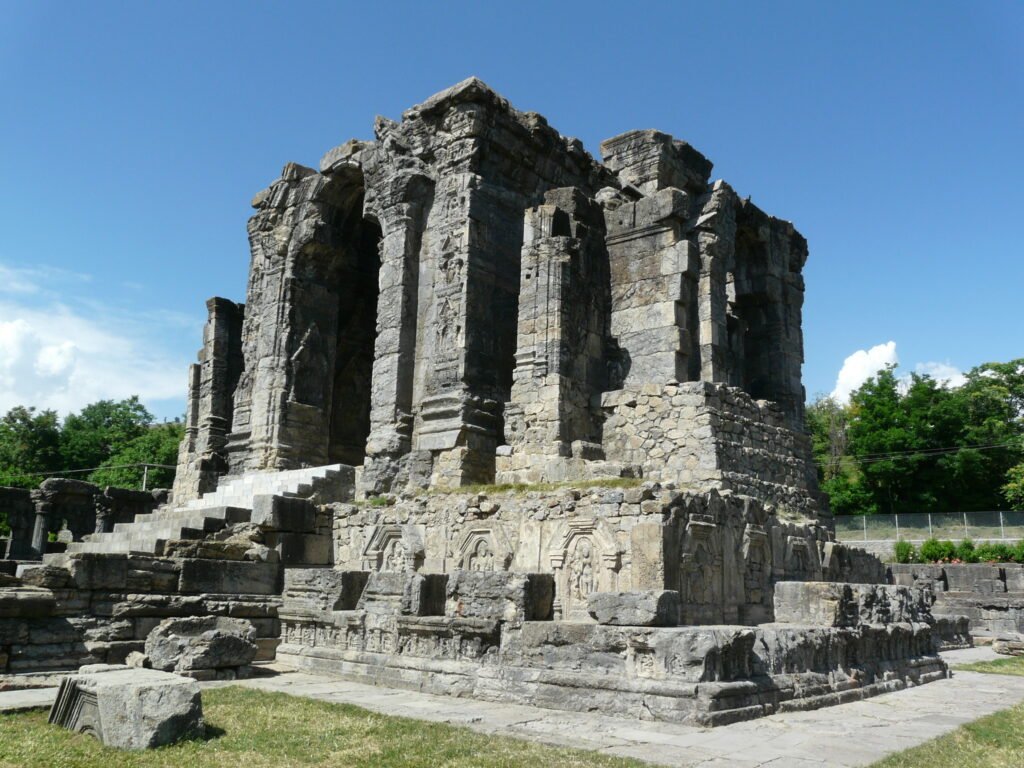
The temple is built on a plateau (a karewa) offering a commanding view of surrounding Kashmir Valley.
The layout: a large courtyard (quadrangular) of about 220 feet in length and 142 feet in breadth.
It had a colonnaded peristyle (a ring of columns around the courtyard) and originally about 84 (some sources say 86) pillars.
The central shrine (sanctum) was in the middle of the courtyard, on a raised platform, approached by steps.
Features of ornamentation include carvings of Hindu deities, river goddesses Ganga & Yamuna, motifs of flora, flying Gandharvas, etc.
The entrance to the temple complex is from the western side, matching temple‑architecture norms in the r
How to Reach to Temple
Nearest airport: Srinagar International Airport (SXR), approx 50‑70 km from Anantnag.
Nearest railway station: Anantnag Railway Station is closest; larger networks connect through major junctions.
By road: From Srinagar or within Kashmir Valley, take the highway / road to Anantnag, then local roads to Mattan / Martand temple. It is about 9 km from Anantnag town.
Local transport: taxis / shared jeeps from Anantnag; road conditions may vary depending on weather & season.
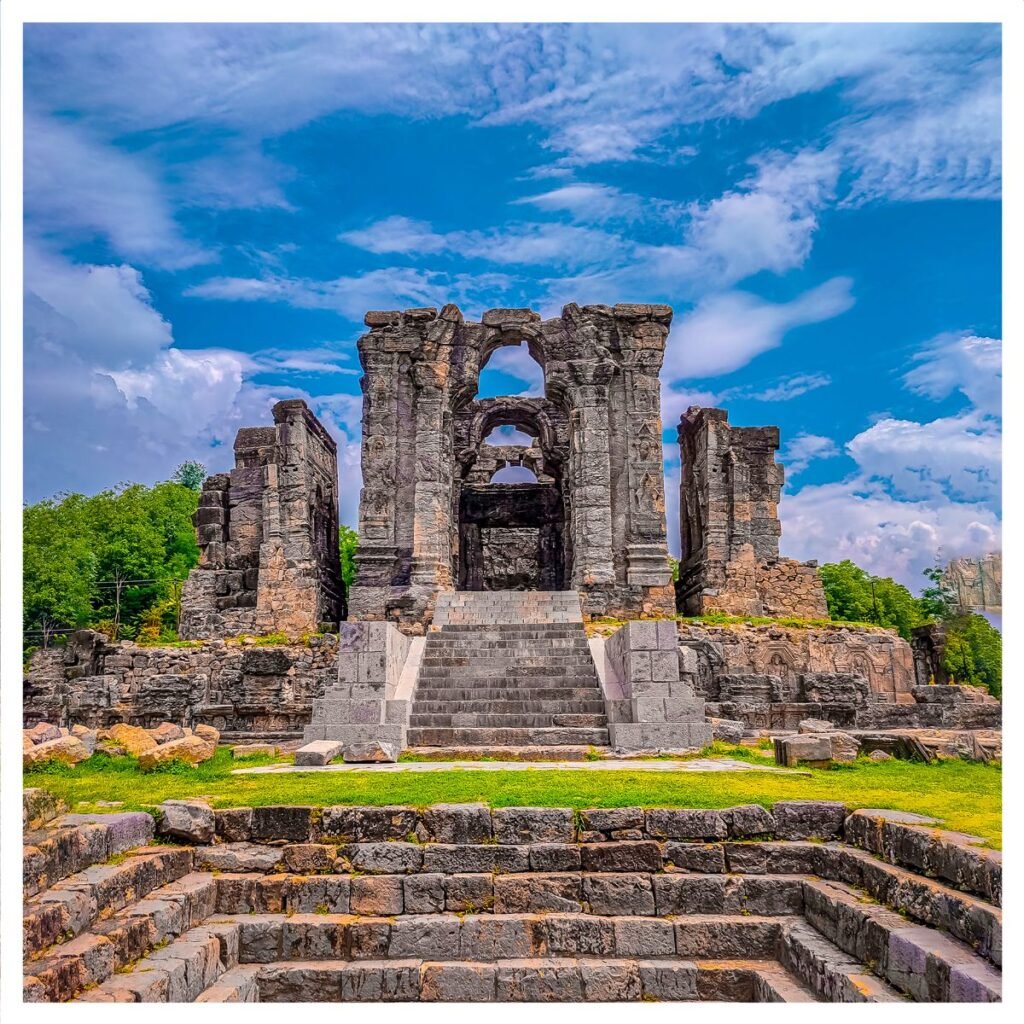
Temple Timings
